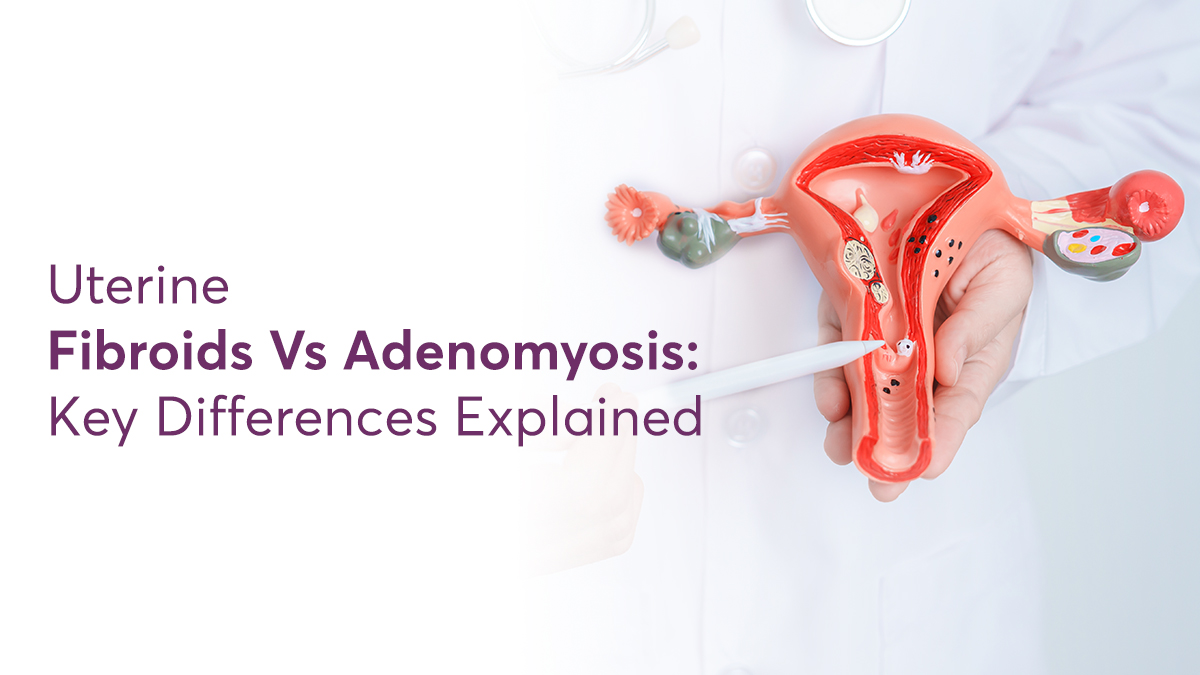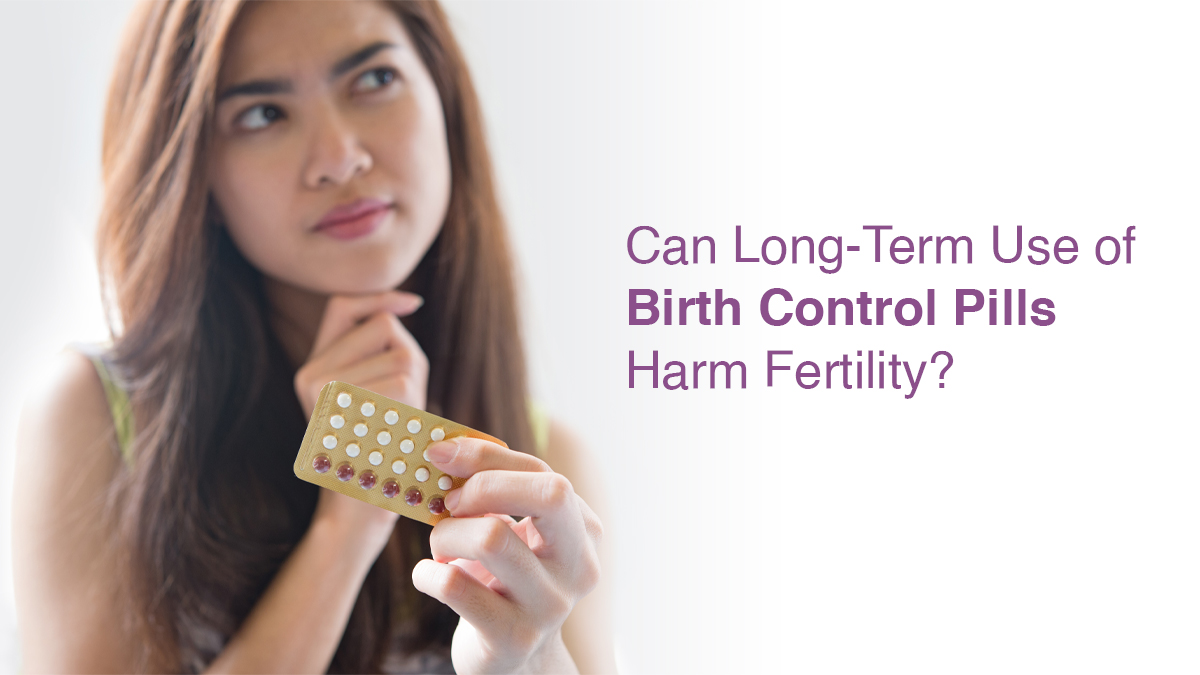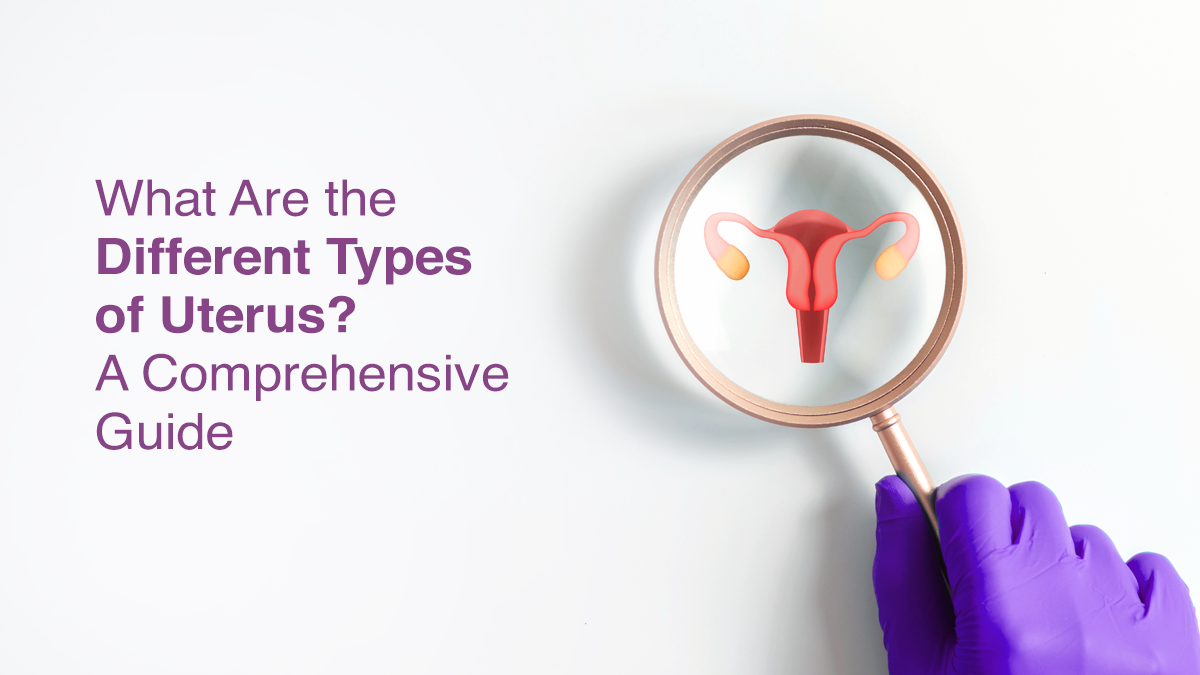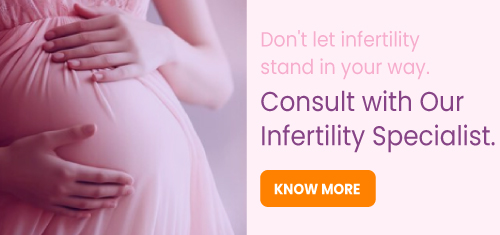
Uterine Fibroids Vs Adenomyosis: Key Differences Explained

For conception to take place, a complex interaction of hormonal, genetic, and anatomical elements must be in harmony. Many people get pregnant spontaneously, but others may have difficulties because of several underlying problems that influence reproductive health. Fertility can be affected by conditions such as irregularities in ovulation, hormone imbalances, and physical abnormalities in the reproductive organs, all of which are frequently diagnosed and treated by medical professionals. Uterine health is one of the most significant physical variables that can interfere with fertility. Common uterine disorders that might impact fertility include fibroids and adenomyosis; each has unique traits and treatment consequences.
What are Uterine Fibroids?
Fibroids are non-cancerous growths that form inside the uterine muscle walls and are made of muscle and fibrous tissue. They range in size from little, almost perceptible nodules to massive masses that can change the uterus’s form. The most typical time for fibroids to develop is during the reproductive years, most likely due to the effects of hormones like progesterone and estrogen. Fibroids depending on their size, number and location, they can cause pain, excessive menstrual bleeding, and even problems with conception and pregnancy. Whereas in some cases, they can be asymptomatic and diagnosed by means of physical examination and imaging modalities like ultrasound.
What is Adenomyosis?
Adenomyosis occurs when the endometrial tissue, which usually lines the lining of the uterus, starts to expand into the uterine muscles. This development may result in inflammation, thicker uterine walls, and a larger uterus. Infertility is directly linked to inflammation that makes the uterus unsuitable for pregnancy, making it harder for women to conceive. The fact that adenomyosis is benign—that is, not cancerous—should not be overlooked.
Key Differences Between Uterine Fibroids and Adenomyosis
While their symptoms of heavy bleeding and pain are similar, the way they affect the uterus differs. Let’s take a look at fibroid vs adenomyosis, as they can help us to pick the correct treatment approach. Here are some of them:
Location and Nature of the Condition:
Uterine Fibroids:
These tumours that are not malignant and arise from the uterine muscle cells. They are either confined to muscle layer, or extend into outermost layer (Serosa), or extend into the inner most layer of uterus (Endometrium), creating discrete masses.
Adenomyosis:
The development of endometrial tissue into the uterine wall, on the other hand, is a characteristic of adenomyosis, which causes the uterus to expand and become inflamed overall. The uterus may appear uniformly enlarged as a result of this internal expansion.
Tissue Involvement:
Uterine Fibroids:
They are non-cancerous growths composed of smooth muscle and fibrous tissue that develop inside or on the uterine wall are known as uterine fibroids. These growths are surrounded by pseudo capsule separating it from normal muscle layer of uterus, can form in different areas of the uterus.
Adenomyosis:
On the other hand, adenomyosis happens when endometrial tissue, which typically lines the inside of the uterus, develops into the uterine wall’s muscle. In addition to causing discomfort and severe bleeding, this causes the uterine walls to thicken.
Uterine Appearance:
Uterine Fibroids:
Usually presenting as well-defined, smooth, round, or oval masses, uterine fibroids frequently take the form of noticeable lumps or growths on the outside or inside the uterine walls. These growths are often encased in a capsule and can vary in size.
Adenomyosis:
In contrast, owing to endometrial tissue penetrating the muscle layer in adenomyosis, the uterine walls appear thicker and more uneven. This causes the uterus to become more irregularly shaped and diffusely expanded, which frequently makes it appear deformed or bulky on imaging.
Symptoms:
Uterine Fibroids:
Depending on the size and location of the fibroids, symptoms of uterine fibroids are pain, pelvic pressure, and excessive monthly bleeding.
Adenomyosis:
The symptoms of adenomyosis, on the other hand, usually worsen during menstruation and include copious bleeding, severe cramping during periods, and persistent pelvic pain.
Impact on Fertility:
Uterine Fibroids:
How are fibroids and fertility linked? By obstructing the fallopian tubes, causing blood flow problems to the uterus, or changing the shape of the uterus, uterine fibroids can impair fertility by impeding the implantation of embryos.
Adenomyosis:
They can lower fertility by causing an unnatural uterine environment, which can result in early pregnancy loss or implantation failure because of the thicker, inflammatory uterine lining.
Diagnosing Uterine Fibroids vs. Adenomyosis
Uterine Fibroids:
Pelvic examination, ultrasounds, and MRI scans are commonly used to detect uterine fibroids because they enable medical professionals to see the size, location, and quantity of fibroids. For additional assessment, hysteroscopy or sonohysterography may be employed in certain situations.
Adenomyosis:
Although an MRI offers a more precise view of the uterine wall, pelvic ultrasonography is frequently used to diagnosing adenomyosis. In certain instances, a histological examination of the tissue following a hysterectomy may be necessary to provide a conclusive diagnosis.
Treatment Options
Uterine Fibroids:
Treatments for this condition are based on symptoms, location, and size. While drugs or hormonal therapy can help control symptoms, asymptomatic tiny fibroids might not need any treatment at all. For symptom relief, non-invasive techniques such as uterine fibroid embolisation are available. Surgery is recommended as the preferred uterine fibroid treatment when you’re dealing with bigger, bothersome fibroids or women in reproductive age with fibroids affecting the fertility depending upon the number, location and size of fibroids. Based on the features of the fibroids, treatments range from minimally invasive procedures to more involved surgeries.
Adenomyosis:
Hormone therapy to lessen severe bleeding and pain control with anti-inflammatory drugs are common treatments for adenomyosis management. A hysterectomy might be advised in extreme circumstances, especially for people who do not intend to become pregnant in the future.
When to Seek Medical Advice
If you have symptoms like heavy or extended menstrual bleeding, severe pelvic discomfort or have pregnancy with fibroids as well as observe noticeable changes in your monthly cycle, you should consult a doctor. Early evaluation can also help manage symptoms and avoid problems with fertility and general health if uterine fibroids or adenomyosis are suspected.
Conclusion
Although the symptoms of fibroids and adenomyosis are similar, it’s critical to comprehend how they differ in order to manage and treat them effectively. If you think you could be suffering from one of these illnesses, consider booking an appointment to an Oasis Fertility Clinic near you. The fertility specialists from the clinic are well-equipped to address your concerns and chart a treatment plan suited to your condition. You may also call 1800-3001-1000 to avail more details.


fill up the form to get a
Free Consultation
Avail 0% interest on EMI
All Procedures | No Upper Limit
Frequently Asked Questions
How do you confirm adenomyosis?
Can adenomyosis be cured?
Can a woman live with fibroids?
Can I get pregnant with fibroids?
How we reviewed this article:
- Current Version
- January 10, 2025 by Oasis Fertility
- January 7, 2025 by Oasis Fertility






